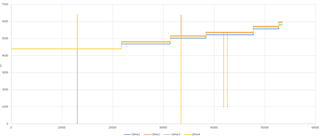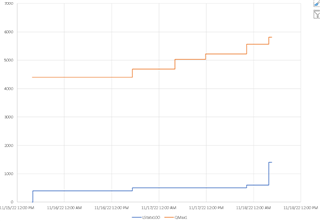Other Parts Discussed in Thread: GPCCHEM
At what point does the initial value of QMax for the pack get calculated? If I start with a particular chemistry and set the design capacity to use a 2P configuration, it seems like the initial QMax is very close to the value for a 1P configuration, and it takes several learning cycles to get it to edge up to the 2x capacity I'm targeting. Is there something besides the values for the Design Capacity that need to be changed to let the system know that you're dealing with 2P instead of 1P? Is there a maximum amount of error that can be compensated for on each learning cycle? Can that be modified at least while this initial learning is happening?




